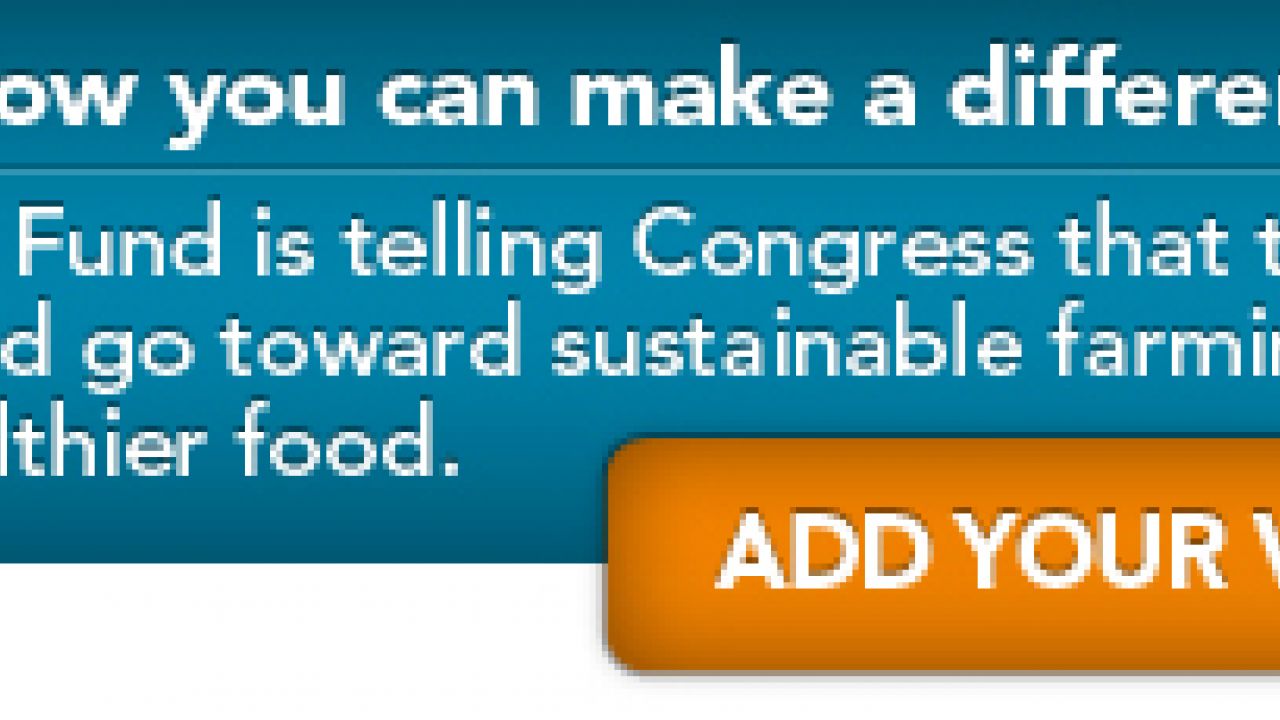
The Environmental Working Group knows that you care about the affordability and availability of healthy food and clean drinking water. So we wanted to make sure you know as much as you can about the massive piece of legislation that guides federal agriculture policy.
Congress rewrites the farm bill every five years or so. It drives federal spending for farm, nutrition and conservation programs and is the only important piece of environmental legislation that Congress is almost certain to enact over the next 18 months. In just a single year – 2010 – farm bill programs spent $96.3 billion. With so much on the table, here’s our list of the 10 most important things you should know about the farm bill:
1) The farm bill doles out billions of taxpayer dollars in subsidies to the largest five commodity crops: corn, cotton, rice, wheat and soybeans. Those payments go out, regardless of need, and they mostly fail to help the nation’s real working farm and ranch families. In fact, since 1995, just 10 percent of subsidized farms – the largest and wealthiest operations – have raked in 74 percent of all subsidy payments. 62 percent of farms in the United States did not collect subsidy payments, according to the U.S. Department of Agriculture.
2) The Obama Administration says fruits and vegetables should fill about half of our plates during meal times. Yet, only a tiny fraction of the farm bill funding goes to programs that support healthy fruits and vegetables, and many of these programs have no budget going into the next farm bill, which is up for renewal in 2012.
3) Some 90,000 checks went out to wealthy investors and absentee land owners in more than 350 American cities in 2010, despite the so-called “actively engaged” rule adopted in the 2008 farm bill. This rule was designed to ensure that federal payments go only to those who are truly working the land. It hasn’t worked.
4) A handful of other commodities also qualify for government support, including peanuts, sorghum and mohair. Dairy and sugar producers have separate price and market controls that are highly regulated and can be costly to the government.
5) The flawed subsidy system creates perverse incentives for farmers to grow as much industrial-scale, fertilizer- and pesticide-intensive crops as possible, with harmful effects on our environment and drinking water – and the availability of organic food in your grocery store.

6) The farm bill provides money for good things too. More than two-thirds of the authorized spending goes to the Supplemental Nutrition Assistance Program (formerly known as the food stamp program), which helps low-income Americans purchase food.
7) Other farm bill dollars pay for the Senior Farmers’ Market Nutrition Program, which gives vouchers to seniors to buy food at farmer’s markets, and the Fresh Fruit and Vegetable Program, which provides nutritious produce to schools. These nutrition programs are likely to be first on the chopping block as Congress tries to reduce the federal debt, while the subsidy programs will surely be protected.
8) The government makes a lot of promises about supporting conservation programs to protect water, soil and wildlife habitat, but those promises largely go underfunded and unfulfilled. Still, the farm bill provided more than $4 billion this year to help farmers conserve soil, clean up the water and protect habitat for wildlife.
9) The farm bill should do a lot more to provide healthy food, protect the environment and help working farm and ranch families, but there are a host of well-funded and well-connected interests that benefit greatly from the status quo. The list includes politicians looking to fill campaign coffers, corporate agri-chemical giants like Monsanto and Syngenta seeking to expand their markets, and big Ag’s public relations and lobby organizations, which cash in year after year.
10) Since only 2 percent of Americans directly engage in farming, the farm bill is largely crafted and debated out of the spotlight. Historically, the process of writing it embodies the worst kind of bipartisan logrolling and horse-trading.
Knowing that a lot of the money goes to nutrition programs and that the legislation has major effects on American’s food supply, we think it’s time to start calling it a food and farm bill. EWG’s top priority in the next farm bill is to protect food assistance programs for those most in need, especially in the lingering aftermath of the 2008 financial crisis. EWG also wants to shift a large chunk of the farm subsidy dollars into conservation programs and reform crop insurance – which has ballooned into another lavish subsidy for producers. Finally, EWG wants energy provisions that encourage truly sustainable biofuels and biomass energy alternatives, not heavily subsidized and inefficient corn ethanol.



